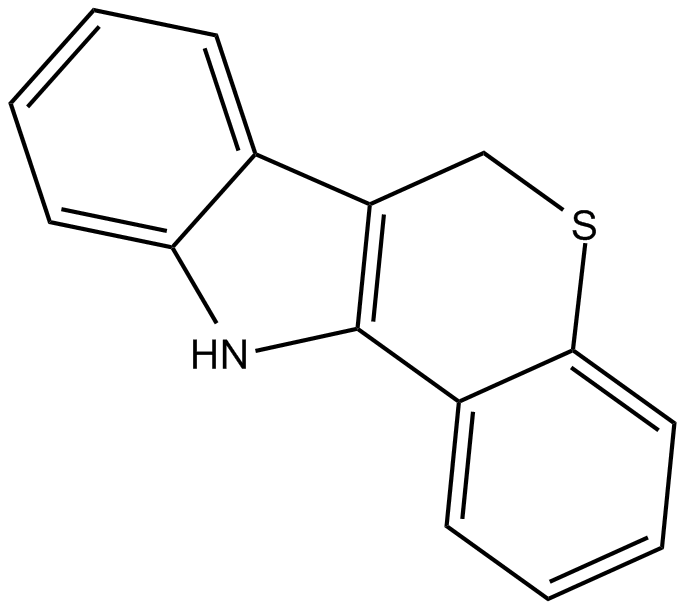PD 146176
|
| Catalog No.GC12205 |
PD 146176 is one of the potent and selective inhibitors of reticulocyte 15-LOX-1.
Products are for research use only. Not for human use. We do not sell to patients.

Cas No.: 4079-26-9
Sample solution is provided at 25 µL, 10mM.
PD 146176 is one of the potent and selective inhibitors of reticulocyte 15-LOX-1 [1]. PD 146176 inhibited the activity of h-15-LOX-1 with IC50 value of 16 ± 2.5µM,and Ki value of 3.9 ± 0.6µM [2].
PD 146176 (1 µg ml-1) inhibited the induction of both arginase-1 and mannose receptor mRNA in both rIL-4-treated and RSV-infected WT macrophages, whereas enhancing the induction of COX-2 mRNA [3]. PD 146176 suggested that it causes strong cell cycle arrest in G1 phase. PD 146176 at its IC50, did not show any inhibitory effect on cell directional migration but greatly increased the activity of the caspases in B16F10 cells [4].PD 146176 significantly prevented glutamate-induced cell death in a concentration-dependent manner. PD 146176 fully protected HT-22 cells against glutamate toxicity at a concentration of 0.5 µM and significantly reduced the annexin-V/propidium iodide-positive cells [5].
PD 146176 treated 3xTg mice had significant reductions in Aβ peptide levels, amyloid plaque burden, tau phosphorylation, and insoluble tau deposition in comparison with controls [6,7]. AD model mice in the control group showed a worsening of memory and learning abilities, whereas mice receiving PD 146176 were undistinguishable from wild-type mice [7].
References:
[1]. Orafaie A, Mousavian M, Orafai H, et al. An overview of lipoxygenase inhibitors with approach of in vivo studies[J]. Prostaglandins & Other Lipid Mediators, 2020, 148: 106411.
[2]. Eleftheriadis N, Thee S, Te Biesebeek J, et al. Identification of 6-benzyloxysalicylates as a novel class of inhibitors of 15-lipoxygenase-1[J]. European Journal of Medicinal Chemistry, 2015, 94: 265-275.
[3]. Shirey K A, Lai W, Pletneva L M, et al. Role of the lipoxygenase pathway in RSV-induced alternatively activated macrophages leading to resolution of lung pathology[J]. Mucosal immunology, 2014, 7(3): 549-557.
[4]. Da-Costa-Rocha I, Prieto J M. In vitro effects of selective COX and LOX inhibitors and their combinations with antineoplastic drugs in the mouse melanoma cell line B16F10[J]. International journal of molecular sciences, 2021, 22(12): 6498.
[5]. Tobaben S, Grohm J, Seiler A, et al. Bid-mediated mitochondrial damage is a key mechanism in glutamate-induced oxidative stress and AIF-dependent cell death in immortalized HT-22 hippocampal neurons[J]. Cell Death & Differentiation, 2011, 18(2): 282-292.
[6]. Oddo S, Caccamo A, Shepherd J D, et al. Triple-transgenic model of Alzheimer's disease with plaques and tangles: intracellular Aβ and synaptic dysfunction[J]. Neuron, 2003, 39(3): 409-421.
[7]. Di Meco A, Li J G, Blass B E, et al. 12/15-Lipoxygenase inhibition reverses cognitive impairment, brain amyloidosis, and tau pathology by stimulating autophagy in aged triple transgenic mice[J]. Biological psychiatry, 2017, 81(2): 92-100.
Average Rating: 5 (Based on Reviews and 27 reference(s) in Google Scholar.)
GLPBIO products are for RESEARCH USE ONLY. Please make sure your review or question is research based.
Required fields are marked with *





















